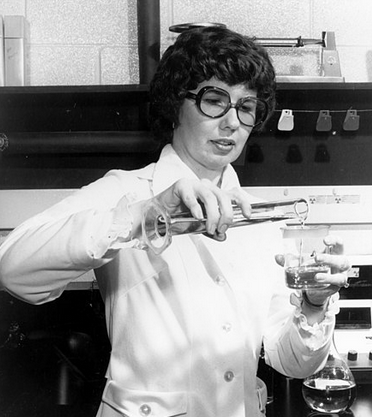We can relate Barbara Askins to other contemporary scientists, such as Irène Joliot-Curie, French physicist, chemist, politician, anti-fascist activist, and feminist; Dorothy Crawford, who discovered the structure of penicillin, which allowed it to be used as an antibiotic; Gertrude Elion, American biochemist, and pharmacologist, who was awarded the 1988 Nobel Prize in Physiology and Medicine for her "discoveries of the key principles of penicillin"; Rosalind Franklin, British chemist and crystallographer whose work was fundamental to the understanding of the molecular structures of DNA (deoxyribonucleic acid), the RNA (ribonucleic acid), the viruses, carbon, and graphite; and, Dorotea Barnés, one of the Spanish pioneers in chemistry, both in research and teaching, during the Silver Age.

Barbara S. Askins
Belfast (Tennessee), 1939
Periodo de actividad: 1976 — Aún activa
Clasificación geográfica: América > Estados Unidos
Movimientos socio-culturales
Edad Contemporánea
Grupos por ámbito de dedicación
Científicas > Químicas
Escritoras > en > inglés
Contexto de creación femenina
Reseña
She obtained a patent for a method of enhancing underexposed photographic negatives. This method has been used by NASA and the medical industry and earned her the title of National Inventor of the Year in 1978.
Justificaciones
Biografía
She is an American chemist known for inventing a method to improve underexposed photographic negatives.
She joined NASA's Marshall Space Flight Centre in 1975. Her task was to find ways to improve the quality of astronomical and geological photographic images taken by the centre's researchers. At the time, the images taken from Earth were barely visible, but they contained a wealth of information that was important to uncover.
In 1976, she published an article in which she presented a new chemical method for intensifying images in a developed photographic emulsion. After subjecting the image obtained to radioactivity, with her new process, she exposed a second emulsion to this radiation. The resulting print, called an autoradiograph, duplicated the image with a significant increase in density and contrast. In other words, it was a novel method to improve underexposed emulsions and increase the limits of photographic detection.
Thanks to her project, the geology of celestial bodies in our solar system could be studied with greater precision. But her invention was not only exploited by NASA, it was also a breakthrough in the field of medical technology. It drove improvements in the development of X-ray images. Many underexposed medical images could be interpreted with higher resolution, allowing for a decrease in X-ray exposure time for patients.
The restoration of old photographs was also improved thanks to an adaptation of Barbara Askins' patented method.
Obras
Patent: Method of obtaining intensified image from developed photographic films and plates.
Bibliografía
Mujeres con ciencia, 17/03/2022
Wikipedia, 17/03/2022
Enfoque Didáctico
You can deal with this author in Technology, in the block of materials for technical use, metals and in the curriculum of Technologies and Society of 4th of ESO. It can also be used in Plastic Arts, within the topic of photography.